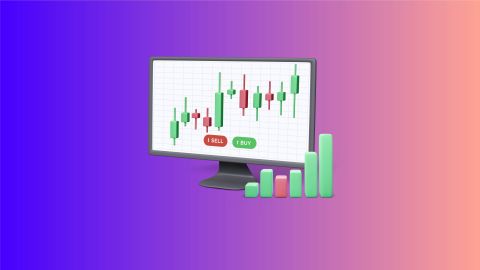The Hanging Man is a straightforward candlestick pattern that signals a potential shift in market direction, specifically from an uptrend to a downtrend. It typically appears at the top of an upward price movement and serves as an early warning that selling pressure may be building. This pattern is formed using four key price points—opening price, highest price, lowest price, and closing price—within a single trading session. The unique structure of the Hanging Man provides traders with important insights into market sentiment, indicating that although buyers pushed prices higher, sellers gained strength by the close, which could lead to a possible price decline.
Hanging man candlestick pattern
The Hanging Man is a bearish reversal candlestick pattern that typically appears after a sustained uptrend, suggesting that the current bullish momentum may be weakening, and a downward trend could be on the horizon. This pattern consists of a single candle characterized by a small real body near the top of the price range, a long lower shadow, and little to no upper wick. Its distinctive shape resembles a hanging figure, which is where it gets its name.
The formation of this candle indicates that, during the trading session, sellers pushed prices significantly lower. However, buyers managed to regain some control and drive the price back up near the opening level by the close. Despite this partial recovery, the presence of a long lower shadow highlights strong intraday selling pressure, while the small real body suggests hesitation or indecision among traders. The color of the candle adds further context: a green (or white) body shows that the closing price was slightly above the opening price, while a red (or black) body indicates the price closed below the open. Regardless of the color, traders typically look for confirmation such as a bearish candle in the next session—before acting on the signal, as this helps reduce the risk of false reversals.
Types of hanging man candlestick pattern
The Hanging Man candlestick pattern can appear in two main forms, depending on the candle's color.
- Bullish Hanging Man (Green/White): In this case, the candle closes slightly higher than it opened. While it still signals potential bearish reversal, it reflects some intraday buying strength.
- Bearish Hanging Man (Red/Black): This version closes below the opening price, showing stronger selling pressure and often considered a more reliable reversal indicator.
Both types suggest a weakening uptrend, but traders usually wait for confirmation before making any move.
How to spot the hanging man pattern
The hanging man candlestick pattern appears at the crest of a bullish trend. When the stock price share has been experiencing a trend of price increase and the buyers are dominating the market, a hanging man pattern may appear, indicating a strong entry of the sellers into the equation. Thus, as the hanging man pattern appears at the top of an upward trajectory, it is also categorised as a bearish price reversal candlestick pattern.
How to use the hanging man candlestick pattern in trading?
To trade using the Hanging Man pattern, traders first identify its appearance after a clear uptrend. Once spotted, they wait for confirmation through the next candle—preferably a bearish one. If confirmed, it may signal an opportunity to enter a short position or exit long trades to secure profits. This pattern helps traders anticipate potential reversals and manage risk more effectively by aligning trades with emerging market sentiment.
Hanging man candle vs Hammer candle
The Hanging Man and Hammer candlestick patterns look visually similar, both having a small real body and a long lower shadow. However, their meanings differ based on where they appear in a trend. The Hanging Man forms after an uptrend and signals a possible bearish reversal, indicating selling pressure may be building. In contrast, the Hammer appears after a downtrend and suggests a potential bullish reversal, showing that buyers are regaining control. Context is key to interpreting these patterns accurately.
Hanging man pattern – Advantages and disadvantages
The Hanging Man candlestick pattern is a useful tool for identifying potential bearish reversals, especially after a strong uptrend. While it offers insights into weakening buying momentum, it is not foolproof and should be used with confirmation from other indicators. Traders often combine it with volume analysis or follow-up candles to improve accuracy. Below is a quick comparison of its benefits and limitations:
Advantages |
Disadvantages |
Simple to identify and interpret on price charts |
Not reliable when used in isolation |
Useful for spotting trend reversals after an uptrend |
May give false signals in sideways or volatile markets |
Helps in planning profit booking or short positions |
Requires confirmation through subsequent candles or indicators |
What Market Mood Index India Trends Indicate
Limitations of using the hanging man candlestick
Here are the limitations of using the hanging man candlestick pattern:
- Waiting for confirmation: When traders and investors use the hanging man pattern, they have to wait for confirmation, which may result in a poor entry point for the trade. This is because the price can fluctuate so quickly that the potential profits from the trade may become lower than the risk involved in the trade.
- Hard to quantify: The hanging man pattern does not provide a profit target, which makes the profit potential hard to quantify in monetary terms. This forces traders and investors to use other candlestick patterns to identify an ideal exit point.
- No assurance: When using the hanging man pattern, there is no assurance that the price will decline even after the stock forms the hanging man pattern. Hence, traders and investors have to use stop-losses when initiating a short-selling trade.
Conclusion
Understanding candlestick patterns like the hanging man is essential for traders in the stock market. The hanging man candlestick, with its small body, long lower shadow, and short upper wick, signifies potential bearish pressure and a potential bearish reversal in stock prices, appearing at the peak of a bullish trend. At the same time, it is crucial to analyse this pattern in conjunction with other indicators. Recognising such patterns effectively aids traders in making informed decisions regarding buying and selling points in the stock market, ultimately impacting their profitability.




